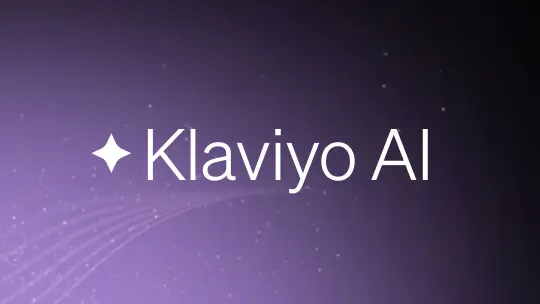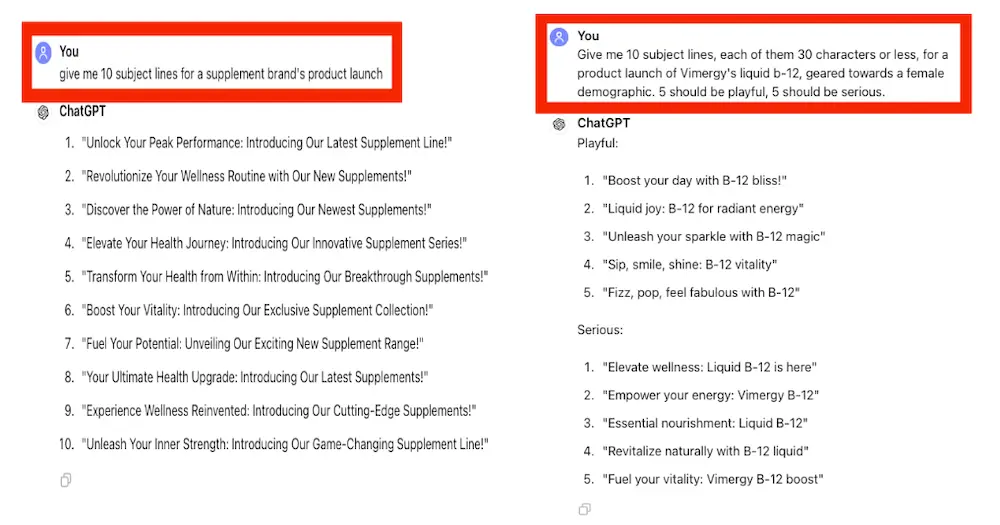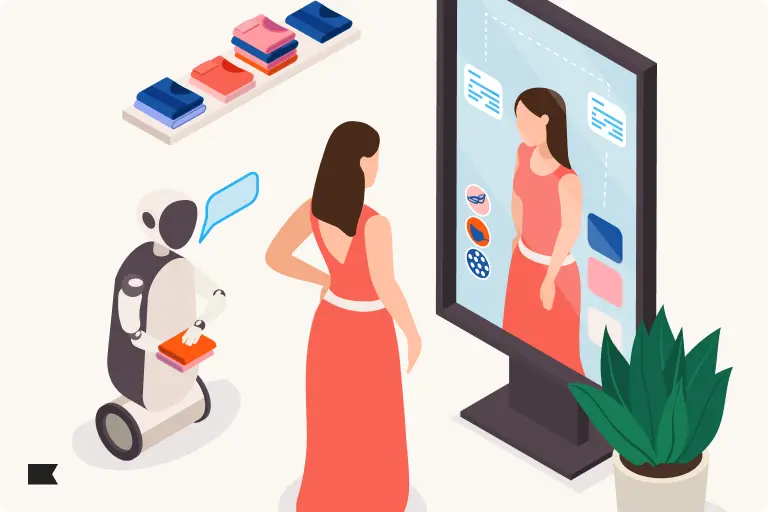
4 tips for writing better AI prompts

If you feel like everyone else has perfected their relationship with AI while you’re still editing terrible outputs, you’re not alone.
With the rising cost of more advanced models, plenty of marketers are still on shaky ground with AI—especially when their prompts yield imperfect results.
But with the right approach, you won’t need to pay for AI software to see great results.
In my role as director of email marketing for SmartSites, my team and I have helped dozens of teams grow online. In the last 2 years of incorporating generative AI into our strategies, During my 2 years of working with generative AI, I’ve learned that as long as I’m strategic with my prompts, I can get better, more relevant copy with free versions.
Here are 4 tips to get the best results from AI:
1. Make your prompts (much) more specific
Your AI tool isn’t as smart as you are, I promise. If somebody asked you to write 10 subject lines for your brand’s upcoming product launch, chances are you would nail it on the first or second try.
But your AI tool needs a much more specific prompt than, “Write 10 subject lines for a product launch.” If that’s all you give it, you’ll find yourself mired in more work to beef up the copy—and you’ll either have to write it yourself or re-write the prompt.
If you give the tool a much more specific prompt, you should get much stronger results. For example:
“Give me 10 subject lines, each of them of 30 characters or less, for a product launch of Vimergy supplement brand’s new liquid B12 with relevance to a primarily female demographic.”
It might take a few more minutes to strategize that first prompt, but a higher level of detail will yield results you can actually use—in this case, gender-targeted subject lines that are within the parameters of length and mention your brand by name, hopefully with relevant references to your industry.
Below is an example of how different the output can be:

Image source: ChatGPT
2. Specify your desired tone
Every line of copy you send to your subscribers has the potential to deepen your relationship with them—and tone plays a big part in relationship building. If you want your subject line to be playful, say so. If you want it to be sincere, make that known to your AI tool.
Don’t be afraid to use generative AI to help you establish or even switch up your brand’s persona. The brands below use a wide range of tones to get their subscribers’ attention: straightforward, urgent, laid-back, and playful. Fenty Beauty uses both straightforward and playful tones in messages sent within days of each other.

Image source: writer’s inbox
In the example above, I asked for 5 serious subject lines and 5 playful ones, but you can play with a wide range of tones. Consider using these words in your prompting when considering tone:
- Urgent
- Exciting
- Casual
- Friendly
- Compassionate
- Romantic
- Nostalgic
3. Build on that initial prompt in the same chat window
Once you’ve given an initial, detailed prompt, you should hopefully get the exact output you were looking for—or at least close to the exact output. But even if you get exactly what you were hoping for, don’t be afraid to stay in that same chat and build off that initial request.
If, for instance, you get subject lines that will work perfectly for your product launch, you don’t need to start a new AI chat window to generate body copy for those same emails. Staying in the same chat window and building from the initial prompt will make the body copy output better than if you had begun a new chat. When AI generates new results within the same session, it references previous outputs to inform any additional requests.
4. Trust your tools—but don’t overestimate them
AI isn’t our enemy—at least, not yet. Right now, it’s an imperfect toolset that can improve our processes, save us time, and help us scale more quickly. None of that should cause fear.
In order to get those benefits, approaching it with a beginner’s mind can be helpful. So, set aside some extra time to work with it, knowing that the better you get at using it, the more effective you’ll be as a marketer. If you’re a beginner, try spending 10-15 minutes a day with your favorite AI model. Some specific tactics you can use to get started:
- Input previous work and ask it to improve it.
- Ask it to run an A/B test in Klaviyo with content you’ve written vs. content they’ve written.
AI isn’t as smart as you—but it’s learning, and you want to give it every advantage you can for the best results.
Related content:
- Leading brands use Klaviyo AI for marketing success
- 4 ways Klaviyo AI helps you reach your customers efficiently and effectively
- How AI is improving speed and scalability for marketers right now

Related content

Learn how K:AI (Klaviyo AI) accelerates strategy, optimization, and customer engagement with unified data and autonomous AI built inside Klaviyo.

New York’s new AI pricing law is reshaping how brands use algorithms and customer data. Here’s why it matters—and what it means for consumer trust.

Discover the impact of AI on marketing and how brands can adapt with conversational content, personalization, and AI-powered customer experiences.